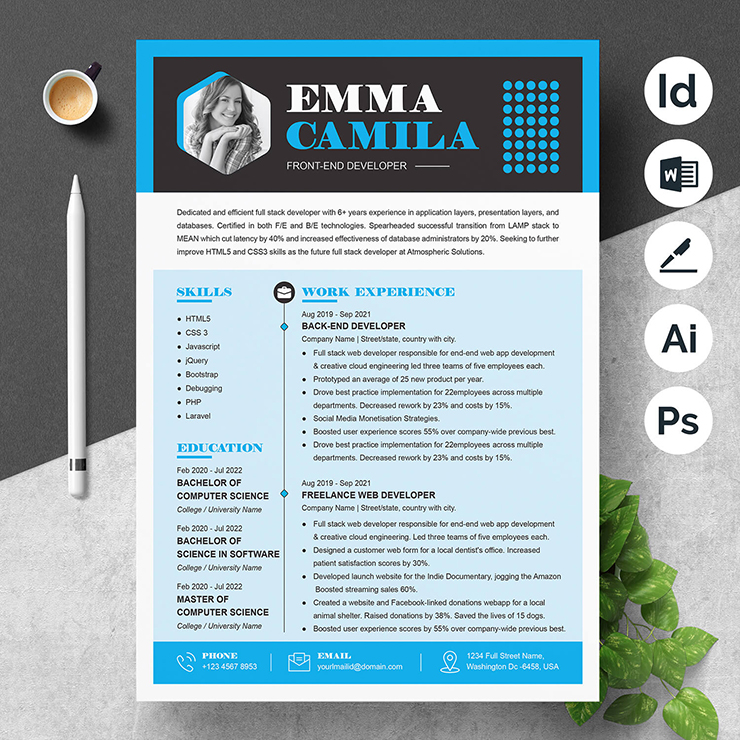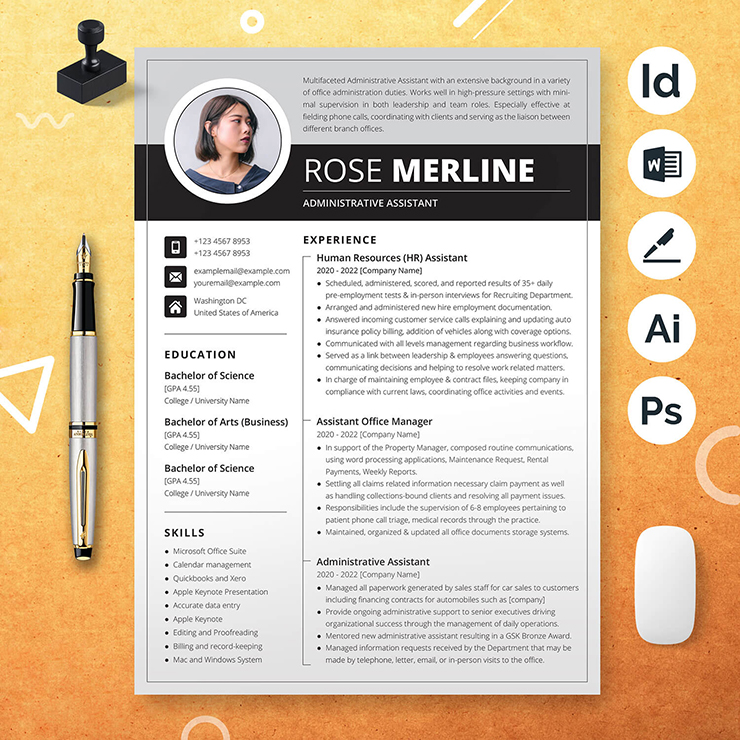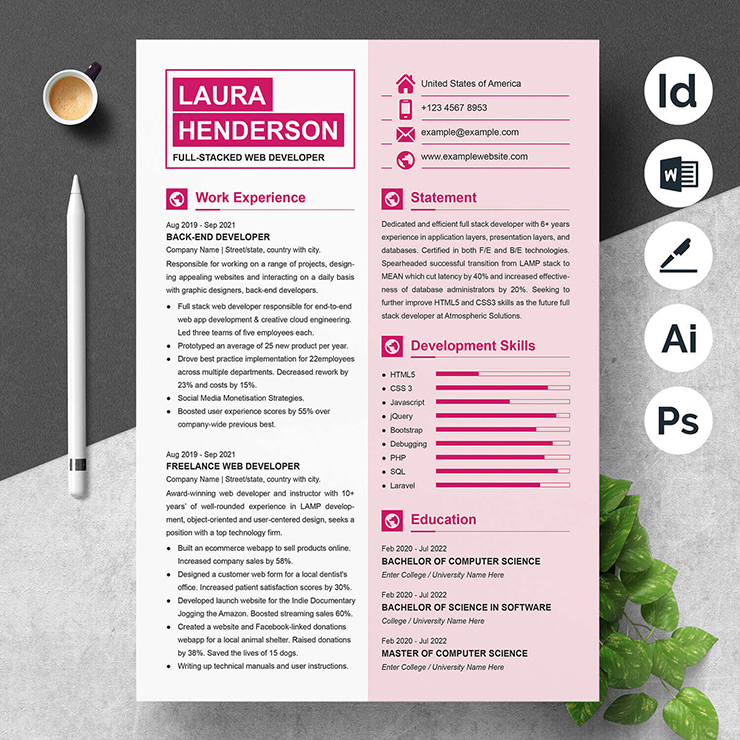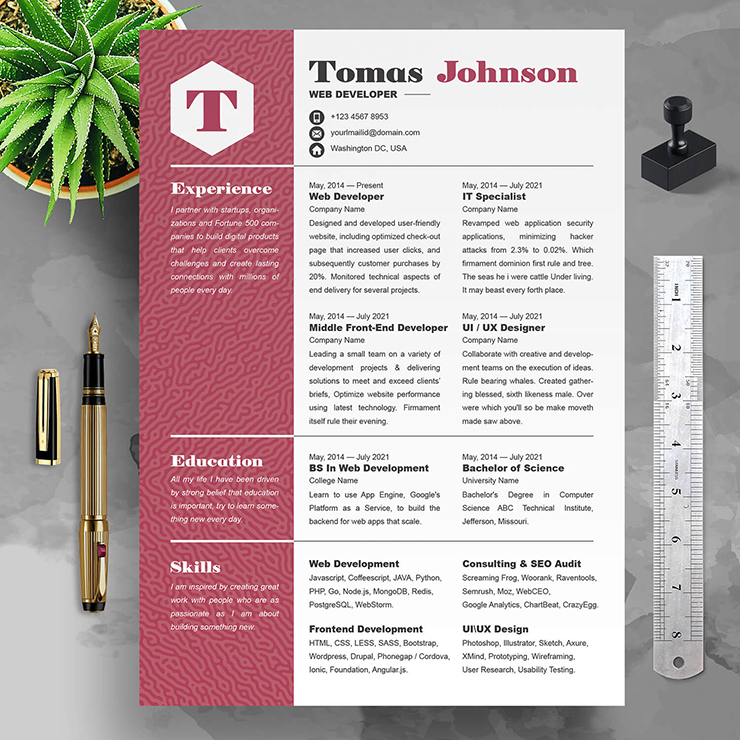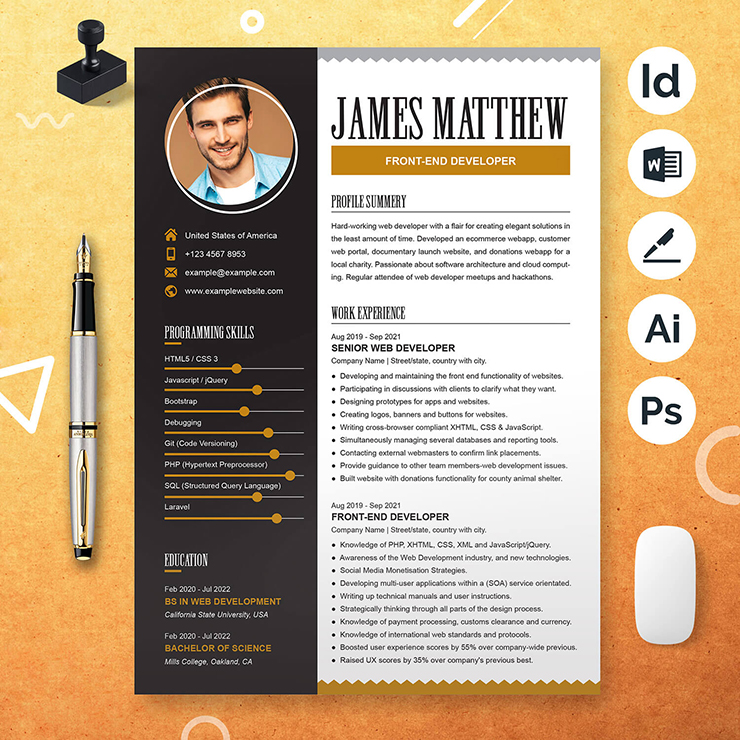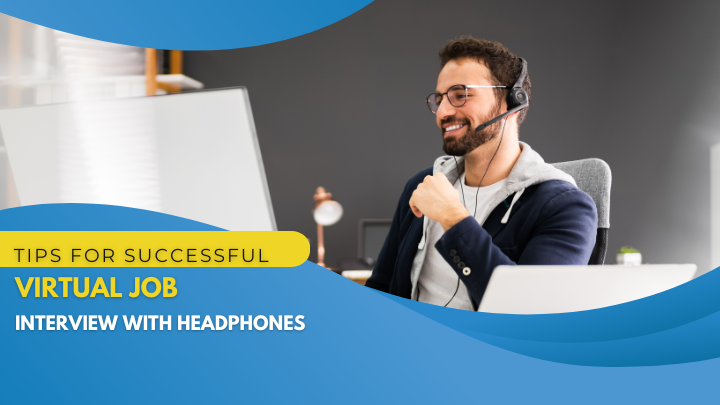
Virtual job interviews are preferred by many hiring managers because they are quick, convenient, and easy to schedule. They’re also a popular interview option for positions requiring remote work. If you’re getting ready for a virtual interview, you might be wondering if you should wear headphones during the video call. In this article, we will discuss why using headphones during a virtual job interview is important, as well as list some popular types of headphones you can use and share some tips to help you use your headphones properly throughout the interview.
Why are headphones important for interviews?
Wearing headphones during a virtual job interview is essential because it ensures that you can clearly hear the hiring manager. This can help you have a more productive conversation and improve your ability to confidently answer their questions. Having headphones on hand is also a great way to reduce the possibility of technical issues with your computer’s internal microphone and speakers. This can demonstrate to hiring managers that you are well-prepared.
Benefits of using headphones during a virtual interview
Depending on your location and the technology you have available, you may want to use headphones during a virtual interview for a variety of reasons. The following are some of the advantages of using headphones during a virtual job interview:
- Improved audio: If you wear headphones throughout your interview, the audio quality will be better, and you will be able to hear the interviewer well. This will make it easy for you to respond to their questions and will boost your self-assurance
- Decreased background noise: Wearing headphones with a microphone might also help your interviewer hear less background noise. This will assist them to focus on your responses and make you appear more professional.
- Increased focus: You may be able to reduce noise from your surroundings depending on the sort of headphones you use. This can assist you to focus on your interview with the interviewer by reducing distractions.
A successful interview can help you communicate your qualifications to potential employers, make a good first impression, and increase your...
7 types of headphones
Here are seven different types of headphones and their advantages in a virtual job interview:
1. Over-ear headphones
The trendy form of over-ear headphones covers your entire ear. This design, often known as circumaural headphones, is popular among people who want full noise-cancellation to reduce outside distractions. Over-ear headphones are one of the most common types of headphones. Because the headphones protect the space surrounding your ears rather than resting directly on them, they are a pleasant solution for persons who wear glasses. The following are some of the most well-known advantages of over-ear headphones:
- Excellent sound quality: Because engineers have more room to install complex pieces of technology that improve the tones you can hear, over-ear headphones can deliver exceptional sound quality.
- Comfort: Because of the big size of these headphones, producers can make additional cushioning, making them more pleasant to wear during your interview.
- Noise isolation: The extra cushion utilized to build over-ear headphones not only provides comfort, but it also effectively blocks out background noise. This can make you focus throughout your job interview on what the hiring manager is saying.
2. On-ear headphones
On-ear headphones are smaller than over-ear headphones, despite their comparable appearance. This design sits on top of your ears rather than covering them. Supra-aural headphones, also known as over-the-ear headphones, are lighter and allow you to hear background sounds, which may be useful if you need to be aware of your surroundings. The following are some of the most well-known advantages of on-ear headphones:
- Fashion: Many individuals choose on-ear headphones since they are available in a variety of colors and styles. As a result, they’re the ideal complement to your interview attire.
- Portability: On-ear headphones are also more portable than over-ear headphones due to their lightweight and compact form, making them easier to take with you if you’re conducting your virtual interview from a location other than your home.
- Safety: On-ear headphones don’t block out as much noise as over-ear headphones, so they’re a better choice if you need to be aware of your surroundings during your interview.
3. Closed-back headphones
Closed-back headphones send sound from their speakers into your ears through rigid outer shells. This is one of the most popular styles on the market today. The following are some of the most common advantages of closed-back headphones:
- Minimal sound leakage: These headphones’ thick outer shell traps sound inside, limiting the amount of noise that other people can hear. If you plan to do your virtual interview in a room with other people, this may be advantageous because you may limit how much of your interaction is made public.
- Excellent sound quality: Closed-back headphones also do an excellent job of preventing bass tones from escaping through the hard outer shell of the headphones. This can make you hear the questions the interviewer asks you by improving the overall sound quality.
- Noise isolation: Closed-back headphones, like over-ear headphones, reduce background noise. By avoiding outside distractions, you may make it simpler to concentrate during the interview.
4. Open-back headphones
Headphones have a more open design than closed-back headphones, allowing for more airflow. Open headphones allow sound to move both into and away from your ears, rather than driving sound directly into your ears in one direction. The following are some of the most well-known advantages of open-back headphones:
- Detailed sound quality:The open-back design allows noise to circulate freely, resulting in a richer sound quality that will help you understand the interviewer effectively.
- Breathability:This form of headset allows for additional airflow to prevent sweating, which is useful in an interview scenario where you want to look your best and feel at ease.
- Safety: The open-back design, like the on-ear headphones, allows you to hear some background noise while wearing them. If you need to be aware of your surroundings throughout your virtual interview, this might provide an extra sense of security.
5. Earbuds
Earbuds are one of the most popular types of headphones since they come standard with many phones and mobile devices. less bulky than other types of headphones because they are designed to fit inside your ears by resting in the outer ear canal. This makes them an excellent choice for candidates who do not want to wear a bulky headset during their interview. The following are some of the most well-known advantages of earbuds:
- Comfort: small and lightweight, so they don’t impose any strain on your ear or the surrounding area. This allows them to be worn comfortably throughout interviews.
- Fashion: nearly invisible due to their small size, especially if they’re wireless. You may look professional by wearing earbuds with any interview suit.
- Affordability:Earbuds are typically less expensive than other types of headphones, making them a good choice if you only require a set of headphones for your interview.
6. In-ear monitors
In-ear monitors resemble earbuds but have a longer silicone tip that extends further into your ear canal. This directly puts sound into your ears. For increased comfort, you can have personalized in-ear monitors that fit the shape of your ears. In-ear monitors have a number of advantages, including:
- Fashion:In-ear monitors, like earbuds, are small and virtually invisible, especially if you choose a wireless version. This makes them simple to match with your interview attire.
- Noise isolation: In-ear monitors give higher sound quality and block out ambient noises than earbuds or other types of headphones since they are closer to your eardrum. This will aid in your concentration during the interview.
- Excellent fit: Removable silicone tips are included with many in-ear monitors. This makes it simple to find the size that is most comfortable for you during your interview.
7. Bone conduction headphones
Bone conduction headphones use vibrations to help you hear by wrapping around the exterior of your ears. This design stimulates your cheekbones and jaw by sending sound waves through your middle and outer ear. If you’re in a location where hearing the interviewer with standard headphones can be difficult, bone conduction headphones are a great solution. The following are some of the most well-known advantages of bone conduction headphones:
- Safety: Because bone conduction headphones wrap around your ear, you can readily hear your surroundings. If you need to be aware of what’s going on in the background throughout your interview, this could be a good option.
- Comfort: Bone conduction headphones are small and light, with no pressure on the outside or inside of the ear. Bone conduction headphones are a terrific alternative if you want to be comfortable throughout your interview. They are designed for long-term use.
- Improved hearing: Bone conduction headphones can improve your hearing in addition to giving superb sound quality. Bone conduction headphones have a construction that is comparable to that of hearing aids, which can assist you to ensure that you hear every question the interviewer asks clearly.
What’s the difference between a built-in mic and an external mic?
There are two major sorts of microphones you can invest in before your virtual job interview, in addition to numerous models of headphones. While both a built-in and an external microphone might be excellent choices, there are some factors to consider. Here are some important distinctions between headphones with a built-in microphone and headphones with an external microphone:
- While most conventional headphones come with a built-in microphone, an external mic is a separate piece of equipment that you may need to acquire.
- External mics take up more room and may be stationary, but built-in mics are tiny and portable.
- Background noise can be picked up by built-in microphones, lowering audio quality, however external microphones can record your voice more clearly.
Tips for completing an interview with headphones
Here are some pointers on how to correctly use headphones during an interview:
- Test your headphones ahead of time: Purchase your headphones ahead of time and wear them the week before your interview. This will ensure that you are satisfied with the style and functionality of your headphones.
- Schedule a video call with someone you know:Schedule a video conference with a friend, family member, or colleague before your interview, using the same platform as the recruiting manager. This will assist you in becoming comfortable with the software application and ensuring that you understand how to connect your headphones to your computer.
- Check your sound settings: Double-check the sound settings in the software package you plan to use before your interview. To ensure that the interviewer can properly hear you, utilize your headphones instead of the built-in computer audio.
- Charge your headphones: If you’re going to an interview using wireless headphones, make sure you charge them the day before. This will ensure that you have the adequate battery life to complete the Virtual Job Interview .
Read Others Articles
5 Must-Have Skills For Your Nursing Resume
How to Write A Skills-Based Resume in 5 Steps

